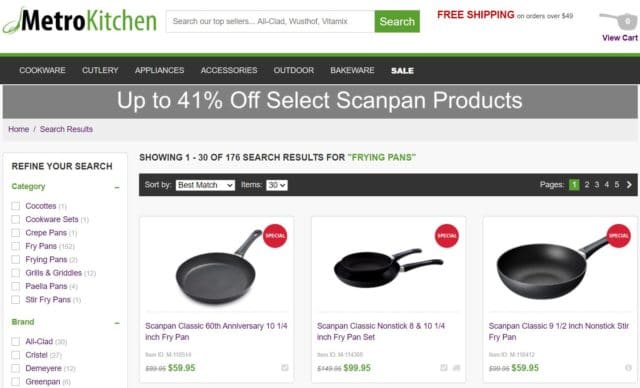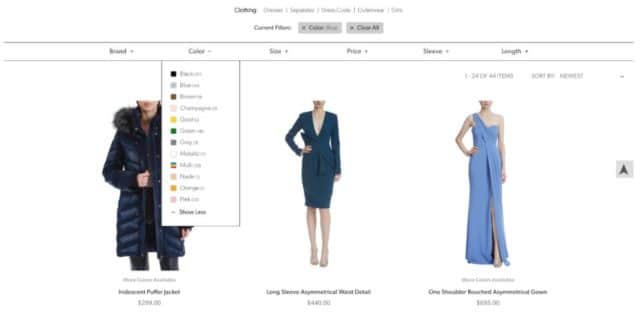Think of the last time you went looking for a product at a brick-and-mortar store. If you didn’t know where to find it, you probably asked an employee to point you in the right direction. Online, the site navigation serves the same purpose, and ecommerce faceted search plays a critical role in the shopper experience. So let’s talk about faceted search and how to use it to guide customers to products they’ll add to their carts.
What is Ecommerce Faceted Search?
Ecommerce facets are a navigation feature that helps customers filter products on search results, categories, and landing pages. Facets consist of product attributes, like price, size, and color. And facet options are the choices customers have among those attributes. You might find small, medium, and large as options within the “Size” facet, for example. Faceted search helps merchants deliver the most relevant products to their customers, especially when a broad range of inventory is on offer.
What Does it Look Like in Action?
Metro Kitchen is one example of an online store with an extensive variety of products – in this case, cookware and kitchen appliances. When a shopper searches for frying pans on this website, they’re presented with 176 products.
To find a frying pan that suits their needs, they can select options within the “Brand,” “Features,” and “Size” facets, to name a few. If the shopper refines their search by selecting “Le Creuset” as the brand, “Nonstick” as the feature, and “10 inches” as the size, they narrow their options down to three products and get much closer to making a purchase.

Best Practices for Ecommerce Faceted Search
Implementing these ecommerce faceted search best practices will help streamline the path to purchase.
Be specific, but don’t overwhelm shoppers with options
It’s important to give shoppers enough facet options to lead them to relevant products. However, if customers encounter too many facet options, they may suffer from decision fatigue and abandon their search. Rather than presenting shoppers with every possible product attribute that might exist, consolidate and standardize them for faceted search. Remember, your search experience is only as good as your product data.
Fashion designer Badgley Mischka’s ecommerce store sells many garments that come in different shades of blue. Instead of overwhelming customers by presenting them with options for every shade they carry, like “Navy,” “Cerulean,” and “Teal,” this luxury brand consolidated all shades into a single “Blue” facet option.

Carefully consider how many facet options to present to customers to avoid overcomplicating the online shopping experience.
Bonus tip: Apparel retailers that carry clothing from multiple brands should standardize sizes so as to avoid confusing shoppers. Rather than listing manufacturer-provided sizes, like S, M, L, as well as 4, 6, 8, and 26”, 27”, 28,” choose a single sizing standard to apply to your facets — your customers will thank you!




